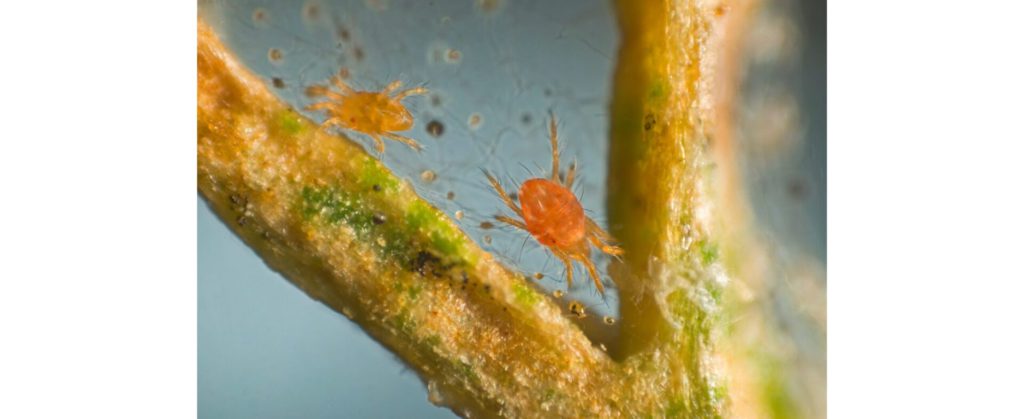Your cart is currently empty!

How to Control Spider Mite indoors and out
If you notice fine webbing on your indoor plants or in the garden, it could be that you have an infestation of spider mite. Look for tiny eight-legged creatures crawling around on the plant. Examine the leaves of the plant, especially near the veins and see if there is spotting or stippling. This is where the insect has sucked on the underside of the plant and removed the chlorophyll from the leaf. There are many different types of spider mite, and you will find them as red, green, yellow or brown varieties. The most common are the two spotted spider mite or the red spider mite.
These pesky sap suckers thrive in warm dry conditions, especially indoors. They reproduce very quickly and a serious infestation can occur in just a few days. The mites feeding on the plant can make it weak and more susceptible to disease and other problems.
Prevent spider mite infestation by keeping plants healthy and well-watered. Fertilise and mulch the garden regularly to make plants strong and able to resist pests. Clear weeds and debris away from plants to remove any hiding places for pests to breed. Try and increase humidity in dry conditions to discourage the mites. Inspect under the leaves for mite eggs, look for webbing and check for spots on foliage so that you can see the evidence of mites and control them before they get a chance to breed profusely.

Controlling spider mite
- Increase the humidity around the plant with saucers of water indoors, misting under leaves and spraying with a hose in the garden.
- Apply an organic insecticidal soap, such as Ecofend or Natrasoap, to dry plants in the early morning or evening. Avoid using when high temperatures above 30C are forecast. Reapply every 7 – 10 days to break the breeding cycle.
- Lime Sulphur and Wettable Sulphur are also effective controls for mites and have been used by generations of gardeners. They are often used as there is no withholding period for edibles.
- Use EcoNeem or Eco-Oil as a general pest repellent. This can be applied after the insecticidal soap.
- In cases of severe infestation, remove affected leaves, place in a sealed plastic bag and dispose in the rubbish. Do not put the cuttings into the compost.
Check out our range of solutions for Spider Mite control. Shop Pest Solutions
This is intended as general information only. Please ask one of our qualified horticulturists for more specific advice for your situation.
Recomended Further Reading


Drought Proofing Perth Soil
Read More: Drought Proofing Perth SoilThis short guide teaches you how to drought proof Perth’s unique soils (sandy and clay). Learn about organic matter, mulch and how to avoid problems such as fungal growth.



